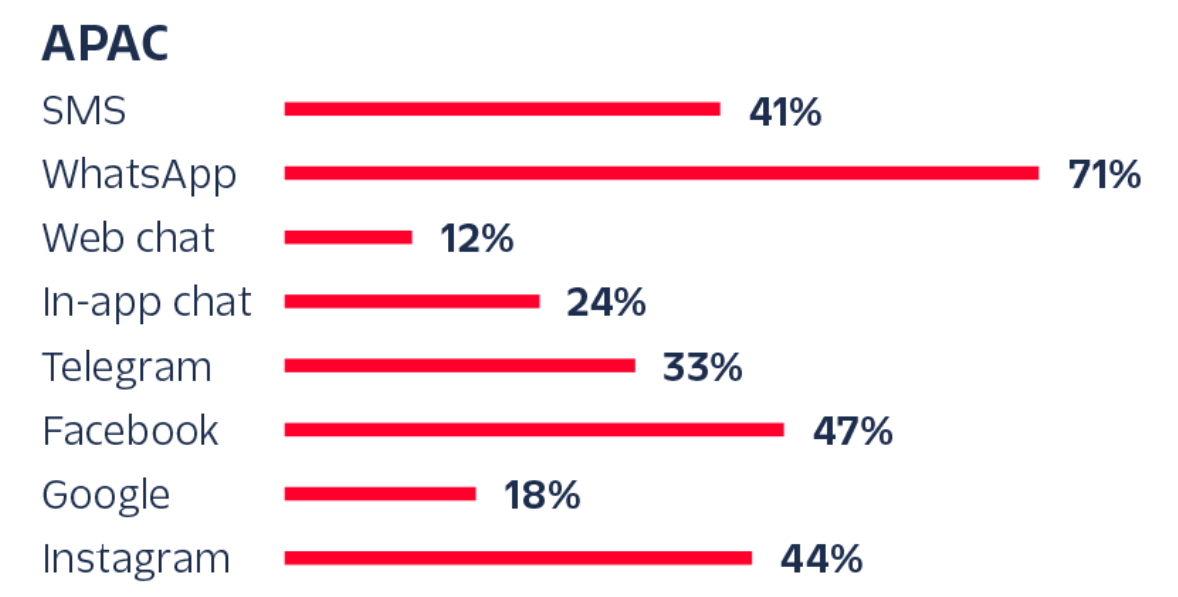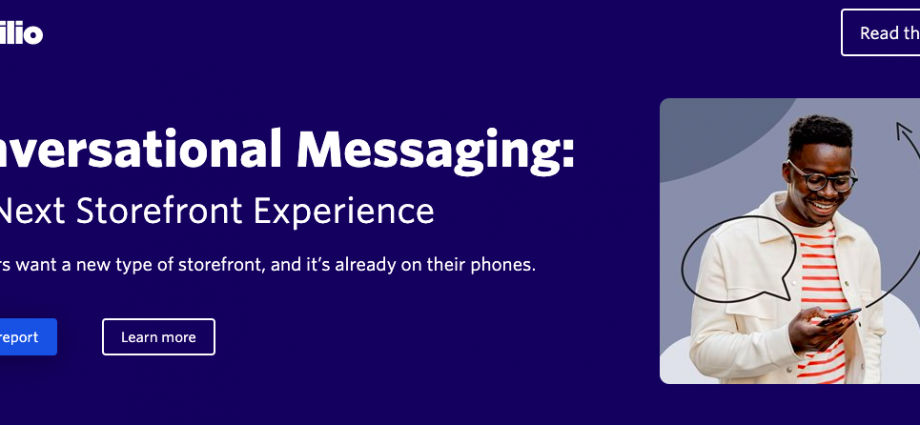- Conversational message is now a “must have” for brands to expand reach
- Seven in 10 would make purchases over WhatsApp, Facebook Messenger
 Driven by shifts in digital consumer behaviour, Singapore’s online shopping landscape has evolved from one-sided, transactional engagements to become a more dynamic digital experience characterised by distributed storefronts, where messaging apps increasingly take centre stage.
Driven by shifts in digital consumer behaviour, Singapore’s online shopping landscape has evolved from one-sided, transactional engagements to become a more dynamic digital experience characterised by distributed storefronts, where messaging apps increasingly take centre stage.
This is according to new data from Twilio, the leading customer engagement platform.
In a statement, the company said conversational messaging has grown from being a “good to have” feature to a “must have” for brands looking to expand reach in Singapore.
Its survey found that six in 10 (62%) of Singapore consumers would like to make purchases directly through a conversational messaging app.
In addition, close to four in 10 (38%) of Singaporeans shared that they would spend at least 20% more on a brand that offers conversational messaging.
Twilio said WhatsApp has emerged as the platform of choice for Singaporeans to engage with their brands by a measure, as is the case with respondents in Brazil, Germany, India, Indonesia, and Mexico.
It added that 72% of Singaporeans indicate that they would make purchases over WhatsApp, with Facebook Messenger coming in second (40%), followed by Instagram (30%).
Meanwhile, respondents from Australia, France and the US prefer leveraging SMS for conversational communication with brands, it said.
David Coghill, head of solutions engineering, APJ at Twilio, said as trust becomes the key currency driving the new era of engagement, businesses that prioritise building trust over transactional engagements have a competitive advantage.
“Our latest research highlights the role of conversational messaging in solidifying relationships that generate both loyalty and bottom-line growth.
“Businesses’ focus has to shift from optimising clicks towards improving clients’ ability to connect and interact with them meaningfully through preferred messaging channels,” said Coghill.

According to Twilio, the initial online shopping boom a decade of the late 2000s revolutionised the shopping experience, enabling businesses to scale faster than ever and reach a wider audience then they ever could before.
It said with smartphone adoption and access to cellular data becoming mainstream, businesses across industries launched digital storefronts with a data-led approach, including A/B testing to figure out the best way to move consumers through the funnel.
At the same time, however, plenty of the personalisation associated with a physical storefront was lost, it added.
However, over the past two years, with the pandemic briefly suspending the operations of physical stores, many businesses have moved to bring the ‘high-touch’ experience more commonly associated with traditional brick-and-mortars to their digital storefronts, Twilio said.
This has fueled the rise of the distributed storefront, powered by conversational messaging, it added.
Simply put, a distributed storefront brings the best of brick and mortar storefronts, and e-commerce platforms, Twillo said.
The firm said where digital storefronts previously helped companies scale their brick-and-mortar storefronts online, distributed storefronts take this to the next level by allowing businesses to drive a personalised experience at scale, by facilitating conversations via the customer’s preferred platform.
Ultimately, the back-and-forth of an exchange helps create connection and fosters confidence in a brand’s commitment to service, the survey highlighted.
Twillo also said in Singapore, almost half (46%) of consumers receive push notifications from at least five different brands. Overwhelmed by the constant stream of notifications, six in ten (58%) shared that they would “sometimes” disable push notifications, the research noted.
It said in order to maximise the full potential of distributed storefronts, brands must invest in collecting zero and first-party data.
This information, provided by customers themselves, will help a brand understand what matters to their customers the most—their pain points, their interests, and their communication habits, it added.
Saving this information and building rich customer profiles enables businesses to cut through all the generic noise constantly thrown at consumers and, instead, build trust with them, the research suggests.
“Ultimately, inflationary pressures and fears of a recession have meant that customers today are more deliberate in the decisions they make, and are keen to learn more about what they’re buying.
“The onus is thus on the brands to provide the level of interaction to meet the needs of curious customers,” he said.
Notably, consumers also vastly prefer to interact with a human agent compared to bots.
Twilio’s study found that while three-quarters of Singapore respondents had at least one conversation with chatbots in the past month, the majority of them (71%) would rather talk to human agents than bots.
The effectiveness of bots was also called into question with only 41% of Singapore respondents saying they could solve their issues with just a chatbot, it stated.

